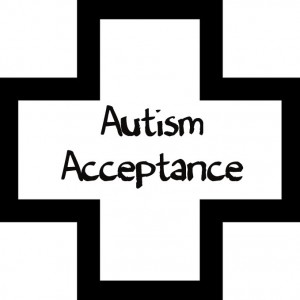An Important Addition
“Awareness” is a vague, hackneyed noun that every supporter of any cause in the world touts as their primary advocacy goal.
But what does it mean to be more aware of autism? Or breast cancer, or childhood leukemia, or poverty, or heart disease? Knowing that someone suffers doesn’t mean that much unless people are compelled to act. There must be a secondary agenda beyond awareness.
In the autism community, “awareness” campaigns have led to educating the public on the full range of autism spectrum disorder behaviors and childhood indicators to watch for in order to fully benefit from early diagnostics. The autism awareness campaigns have been particularly effective in achieving these goals.
But beyond autism awareness sits the critical issue of autism acceptance. Someone may be “aware” of autism, but does that mean he or she “accepts” it? Autism acceptance means acknowledging past prejudices about autism and taking action to establish a brighter, more inclusive future.
Paul K. Longmore is one writer and disability rights activist who has asserted that a hidden and unacknowledged fear and prejudice of disabled people must be addressed in any conversation on disability. Some of the negative attitudes about disability have been so deeply ingrained in the public conscious that true transformation will take time. But as nondisabled people learn more about disability and make efforts to communicate with disabled people, the social conscious will continue to shift.
Many autistic self-advocates have tackled the issue of autism acceptance, dissatisfied with past campaigns that aren’t drawing attention to the broader civil rights issue, and challenged advocates to enhance their “awareness” messages. Autistic self-advocate Paula C. Durbin-Westby even founded Autism Acceptance Day to promote this overlooked social agenda.
Autism acceptance campaigns emphasize both awareness and change. They move beyond the simple transmission of knowledge about autism and challenge people to act. Anyone can lazily become “aware” of something, but to truly “accept” it means adopting specific beliefs and acting accordingly.
Autism acceptance requires more than being able to identify autistic symptoms and tolerating autistic existence in society. Truly accepting autism means:
- Ending the talk about all of the “problems” with autistic people that need to be “fixed” and instead focus on finding supports and making accommodations so they can have the same opportunities neurotypical people enjoy. This doesn’t mean that you are overlooking the disabling symptoms of autism; rather you are identifying these symptoms and addressing them in a way that preserves autistic dignity.
- Sharing autistic self-advocate blogs and other literature with your family and other parent friends.
- Making efforts to communicate with and befriend autistic people and teaching young children to do the same.
- Learning about and accommodating for the specific sensory needs of autistics.
- Hiring autistic people.
- Seeking the opinions of autistic people and regularly including them in the conversation about autism acceptance.
- Promoting and modeling acceptance in your community.
More Ways to Promote Autism Acceptance
The Autistic Self Advocacy Network hosts a website entirely devoted to autism acceptance and the promotion of April as Autism Acceptance Month. Autismacceptancemonth.com encourages people to promote autism acceptance with action and offers specific resources catered to autistic self-advocates, parents, educators, and employers. Some of these resources include fact sheets about early intervention programs, I.E.P.s, inclusion, and making the least harmful assumptions about disability.
The site also offers Autism Acceptance Month apparel and gifts as another way of promoting the conversation about neurodiversity.
Tweak Your Local Autism Awareness Fundraiser
Autism awareness fundraisers are now prevalent all over the world. If you aren’t already in a leadership position for one of these campaigns, it may (or may not) be impractical to think you can change the entire marketing focus and rebrand the promotional material. However, there are simple ways to promote autism acceptance at these events:
- Wear a neurodiversity t-shirt.
- Wear Autism Acceptance Month gear.
- If you are raising money, include a statement on your fundraising page or in a mailing that articulates your stance on autism acceptance.
- Ask to post a flyer about Autism Acceptance Month that directs people to the Autism Acceptance Month website.
Autism acceptance still begins with awareness. But not just awareness of what autism is, but how people view it. Many people have never even heard of neurodiversity or the idea that some autistic people don’t think they have a horrible condition they should be rid of.
Hearing from autistic self-advocates has been a humbling experience for me, which is why I think it’s essential that all parents take the opportunity to connect with autistic voices. Autism advocacy begins with listening to autistics and supporting their voice in the autism conversation. Autism acceptance occurs when you act on that message.
Work Consulted:
Why I Burned My Book and Other Essays on Disability, “Elizabeth Bouvia, Assisted Suicide, and Social Prejudice” Temple University Press, Philadelphia 2003. p.150.


Alpha Academy